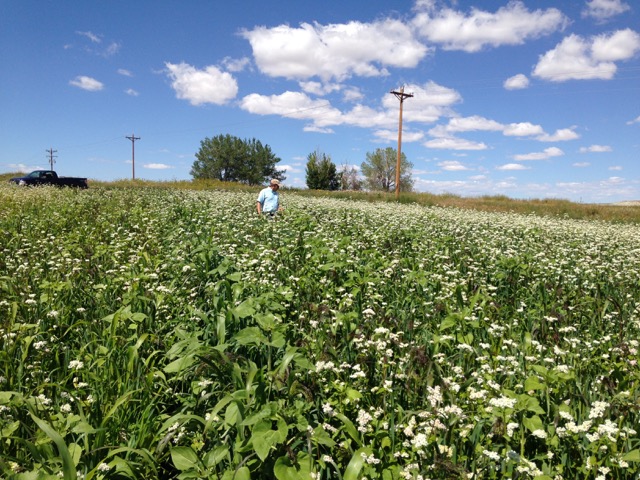Midvale, Nevada receives less than 5 inches of rain annually. The Klein’s have started a no-till and cover crop experiment that they hope will ultimately do three things:
- increase organic matter
- reduce the need for irrigation
- add substance and permeability to light, compacted soil
Click here for the full article, in No-Till Farmer.

In their first year of cover crop trials, 2013, the first-generation family operation (sugar beets,alfalfa, malt barley, beet seed, sheep and bees) planted a blend of cover crops, in June, to an acre parcel on the edge of a center-pivot irrigation system.
The mix contained forage corn, sunflowers, sorghum, buckwheat, radishes, turnips, kale and some additional plant species. He seeded it at about 40 pounds per acre and then incorporated it with a harrow.
One thing that surprised them: the cover crop plants dominated other annual weeds and thrived, well into the fall, even after the first frosts. The second surprise: even after that one year, the soil in the acre of cover crop was “much more mellow.” And their sheep found the new crop tasty, which gave the Klein’s another possible source for supplemental forage value.
While tillage seems advantageous in the first year of cover crop planting, the type of equipment can be less aggressive. Eventually, the benefits to the soil will preclude the need for tillage, and far less water, they believe.
“The carrot at the end of that stick is better water infiltration and water-holding capacity. We have a gut feeling we’ll need less irrigation as soil quality improves, although it’s too early to confirm that,” said Richard Klein.
In 2014, the Klein’s planted five fields in cover crops, the largest of which was about 18 acres. By staggering the planting dates and using a GPS, they were better able to determine the best time to plant. This spring, they saw another benefit: the cover crop residue has reduced the impact of frequent seasonal wind storms on soil loss.
